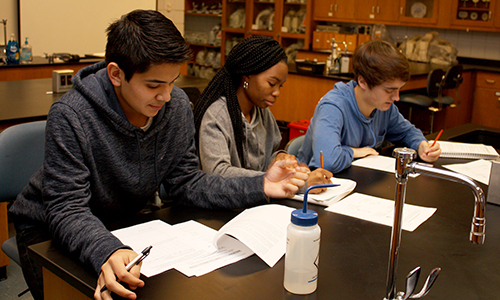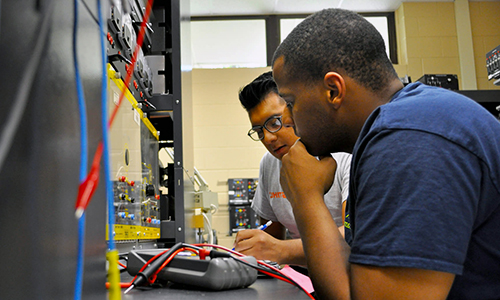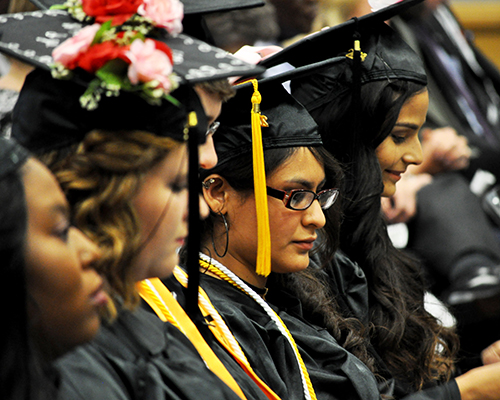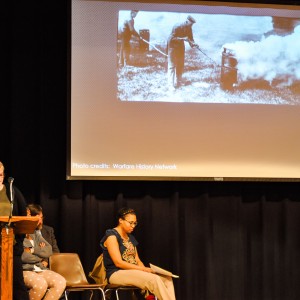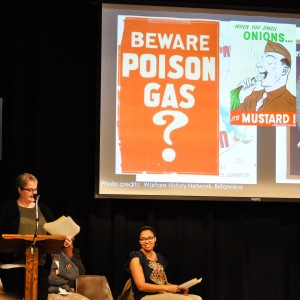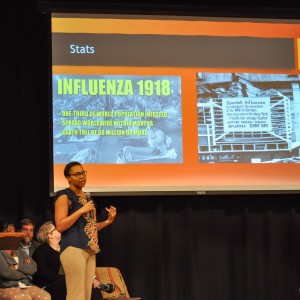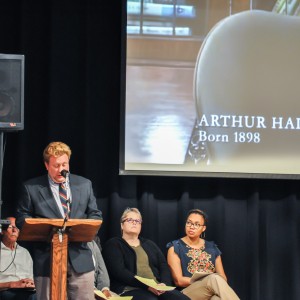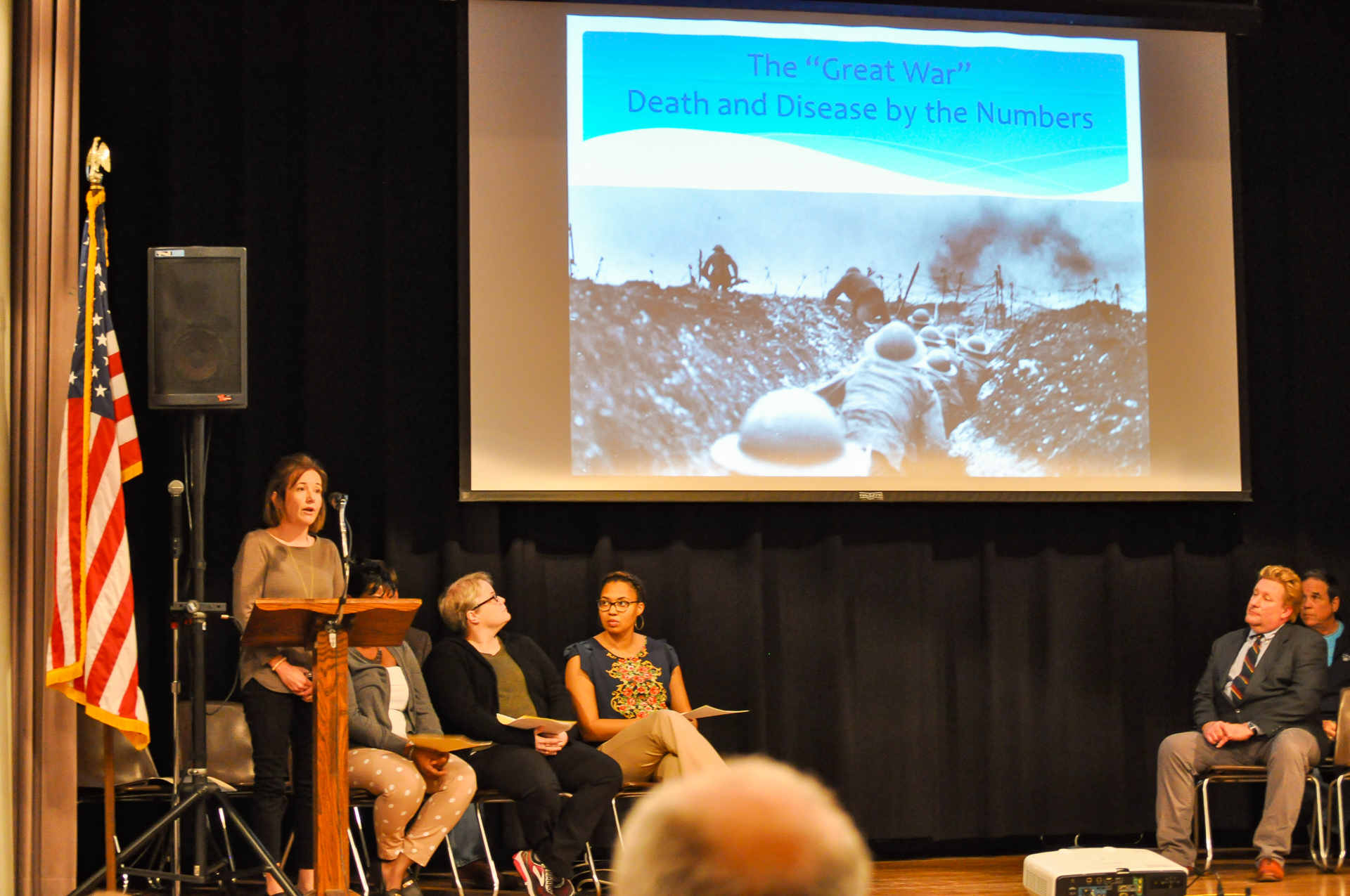
In Celebration of Armistice Day, BCCC Faculty Discuss WWI
Our modern Veterans’ Day originated in 1918’s Armistice, which heralded the cessation of World War One hostilities between Germany and its Allied/Entente adversaries, including France, Great Britain and the United States. This momentous agreement took effect on “the eleventh hour of the eleventh day of the eleventh month” of 1918. While ending military action on the war’s western front, the Armistice simultaneously opened the door on what was in many ways a new world wrought by the “War to End All Wars”’ unprecedented brutality, epic consequences and technological developments.
In commemoration of this extraordinary day’s centennial, Beaufort County Community College’s Arts and Sciences Division welcomed and honored area veterans and their families while also hosting the public and students from local schools. In addition, Arts and Sciences faculty offered a series of brief, fascinating and highly educational presentations about World War I’s consequences and its shaping of modernity.
World War I mobilized over 70 million military personnel worldwide, killed perhaps nine million combatants and seven million civilians, plus unleashed modern horrors such as tank, trench, submarine and aerial warfare along with battlefield deployment of poisonous gases and genocidal atrocities like the Armenian Holocaust. The war and its disruptions also occasioned radical, revolutionary and anti-colonial movements around the planet, including Russia’s shocking transformation from a reactionary Tsarist regime to a communistic Soviet Union that would alarm and defy Western capitalist nations for most of the Twentieth Century.
Although the United States retreated into isolationism regarding European affairs for over two decades following the conflict, its role in World War I foreshadowed the “American Century” wherein the U.S. became a world power deeply involved in international affairs. Woodrow Wilson and Congress’s management of the war effort also introduced a previously almost unimagined level of cooperation among government, industry, agriculture, business owners and labor unions, along with effective but often misleading use of propaganda and unconstitutional suppression of anti-war voices. Moreover, German Americans and their culture suffered tremendous hostility through wartime fervor.
Culturally, World War I for many seemed to challenge or even obliterate diverse traditions and established convictions, especially those associated with the glory and honor of war, the unassailable correctness of king and country, the ‘manliness’ and benefits of martial conflict, as well as fundamental assumptions about courage, patriotism and humanity. This emergent cynicism and burgeoning mistrust came to define many of the western world’s political, philosophical, cultural, literary and artistic movements for years to come. Not least, postwar resentment, pessimism and economic troubles facilitated the rise of fascistic movements in multiple countries, eventually leading to World War 2, the Holocaust, and enormous human suffering.
Further, the war’s massive dislocation of people and intermixing of soldiers from around the world fostered the epidemiological nightmare known as the Spanish Influenza Epidemic, which killed at least twenty million and perhaps as many as fifty million people worldwide in the war’s demographically promiscuous aftermath.
Faculty outlined and contextualized WWI and postwar socio-political, cultural movements. They presented an overview of new technology introduced by the war and facilitated by mathematical/technical advances, as well as of chemical warfare as inaugurated by WWI. They presented a public health explanation of the Spanish Influenza Epidemic as a war-driven phenomenon that reveals much about modern demographics, international human contact, public health and epidemiology, along with a psychological examination of the war’s production among soldiers and civilians of what is now understood as Post Traumatic Stress Disorder. Faculty shared literary and philosophical responses to the war and how these captured the postwar mood, and discussed WWI’s impact on public information, and how these reflected the rise of ‘modernity.’
Students packed the auditorium to listen to these accounts of the war that, while it did not end all wars, ushered in the modern world in which we live today.
Written by Dr. Keith Lyon.

